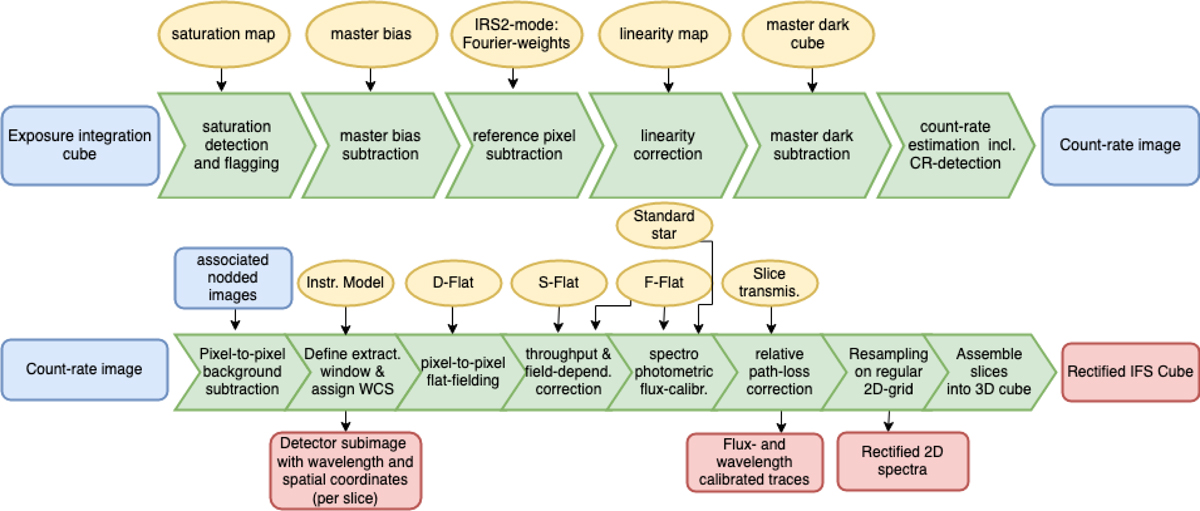Fig. 13.

Download original image
Outline of the data reduction flow for NIRSpec IFS exposures. Top: “Generic” preprocessing that converts raw up-the-ramp integrations into count rate maps containing the number of counts per second received by every detector pixel. This portion of the data reduction is common to all NIRSpec observing modes, and in fact all NIR instruments on board JWST. Bottom: starting with the count rate maps, flow describing the extraction, flux and wavelength calibration, and rectification of each of the 30 slice spectra, so that they can be combined into a three-dimensional data cube per exposure. The combination of multiple dithered exposures into a single “hyper cube” is not shown but will be needed to recover full spatial information.
Current usage metrics show cumulative count of Article Views (full-text article views including HTML views, PDF and ePub downloads, according to the available data) and Abstracts Views on Vision4Press platform.
Data correspond to usage on the plateform after 2015. The current usage metrics is available 48-96 hours after online publication and is updated daily on week days.
Initial download of the metrics may take a while.


